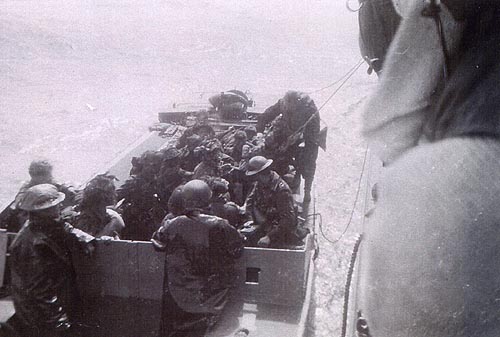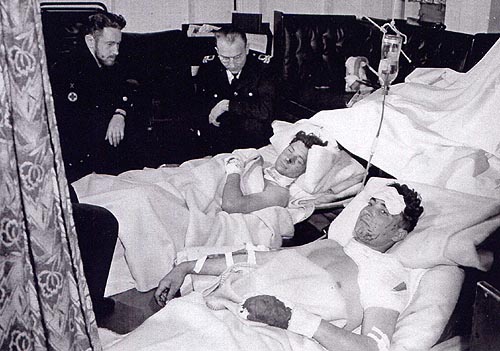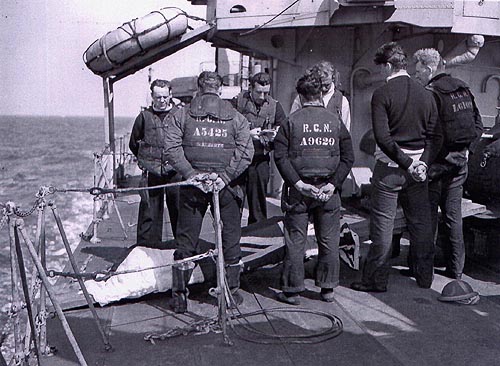![]()
On D-Day, 6 June 1944, one of the hundreds of Allied landing craft sent to Normandy had been subjected to heavy mortar fire when it hung up on an underwater obstacle at the beachhead. Five of the men in the craft were injured, some very seriously. Finally, it broke free and headed back to the ships that were bombarding the German positions. The landing craft moved from ship to ship signalling that they had wounded on board. They wanted to know if anyone would take them for treatment because the designated hospital ship had struck a mine and was out of service. Surgeon-Lieut. Dixon prevailed upon the Captain to transfer the patients to HMCS Algonquin despite a standing order that no injured patients were to be taken on board. Out of the five wounded, four were Royal Marine commandos and one was an RCNVR signalman on loan to the RN.(Copy and all photos on this page submitted by Clifford Brown from "THE CANADIAN MEDICAL SERVICES" - published by the Queen's Printer, Ottawa, 1956..
 |
The landing craft pulls alongside Algonquin. One of the wounded is in the process of being transferred.
An RCNVR signalman with a wounded elbow recuperates in the upper berth in Sick Bay. He is being cheered up by two Algonquin crew who came from his home town of Trail, B.C.
 |
These RM Commandos were brought to Algonquin's wardroom for aid and treatment. One of the ward room tables was used as an operating room table to remove superficial shrapnel and for debridement of wounds. This is a rare photo of the wounded being treated in war time. At the back left is Clifford Brown, Algonquin's medical assistant with Surgeon-Lieut. Dixon at the right. Newspapers and magazines were not allowed to show wounded Allied service personnel during wartime.
 |
Burial at sea for one of the commandos is conducted by Yogi Jenson, Algonquin's Executive Officer. He is the one reading from the book. Despite the Surgeon Lieutenant's best efforts, two men died due to excessive loss of blood and shock.
|
|